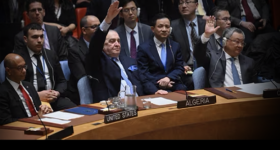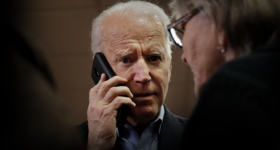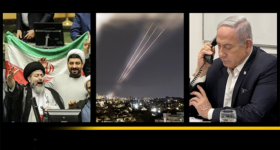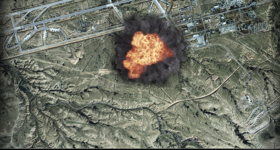Andrew McKillop
21st Century Wire
Guest Columnist
For the Libya war and regime change, things seemed straightforward: Libya is a big supplier of oil and gas to Europe.
Quickly replacing the Gaddafi regime was necessary, despite “the Colonel” being recycled back into grace with a Condoleeza Rice, Tony Blair and Silvio Berlusconi smile and handshake, only a few years before.
Once corporate penetration was underway, western central planners quickly replaced Gaddafi with a Shariah-proclaiming shaky government and its fundamentalist militias, who celebrated Sept 11th 2012 in a special way, by killing the US ambassador and staff in manner mirroring the demise of the late Colonel. But hydrocarbon supplies are vital!
On to Syria
Syria is a very minor exporter of oil (about 0.14 Mbd or 0.27% of world export supplies), with its exportable surplus on a slow downhill for more than 10 years. Kurdish separatists operating in and partly controlling eastern Syria have big plans to raise oil output, but their longstanding war with the el-Assad regime has blighted foreign drilling and related oil E&P activity. Most major oil investors (especially Canadian and Indian) have been tapering down their eastern Syria E&P for more than 3 years, since 2008-2009. Conventional gas resources are not large, mostly difficult access, and their development has been stunted by political and security concerns. Shale gas and shale oil potentials in Syria are however large, but like conventional gas resources are impossible to develop at present.
The country’s hydropower and water resource potential is also large, but any claim that Syria is a “resource-rich jewel” to be liberated, democratized and brought to market as soon as possible – but possibly not Libya-style – is way off the mark.
The nearest-term regional economic role for Syria is development of its agriculture potential, which has been attempted by the father-and-son el-Assad regime, since the 1980s but bad planning, execution and management, and endemic corruption inside the regime only resulted in Syria attaining exporter status in a major agrocommodity (wheat) for a few years in the 1990s. Since that time Syria has tilted back into food import dependence – exactly like Saudia Arabia and the Gulf states whose leaderships pretend to believe in Syria becoming “the Arab world’s bread basket”, under strict Sunnite rule, of course.
Energy resource or energy transport issues are unimportant players in this regime-change experiment, but in a recent Market Oracle posting on the supposed energy drivers behind regime change, William Engdahl writes: “Huge gas resource discoveries in Israel, in Qatar and in Syria combined with the emergence of the EU as the world’s potentially largest natural gas consumer, combine to create the seeds of the present geopolitical clash over the Assad regime”.
He continued: “Natural gas is rapidly becoming the “clean energy” of choice to replace coal and nuclear electric generation across the EU most especially since Germany’s decision to phase out nuclear after the Fukushima disaster. Gas is regarded as far more “environmentally friendly” in terms of its so-called “carbon footprint.”
Too Much Gas – Too Many Pipelines
Huge unconventional (deep offshore) gas reserves have been discovered, and proven or are in the process of being proven in the territorial waters of the following countries:
Israel, Palestine, Egypt, Cyprus, Azerbaijan.
Several other close-by countries are highly prospective, meaning likely also to possess very large reserves of deep offshore gas, called “stranded gas”. This only concerns local and regional, eastern Med and Caspian unconventional gas resource finds: worldwide finds are truly massive, and concern all continents. Any talk about world gas shortage, or control of gas resources by a small number of countries mostly hostile to the West has been exploded, since 2007-2009. This real world state of facts has yet to filter through to Think Tank strategists, deep in their bunkers mulling 1970s-vintage energy crisis issues with a Cold War mindset, in which War on Terror was as unknown as global stranded gas and shale gas resources and reserves.
As recently as 2008 and playing a major role in the setting of Europe’s climate-energy package of policies and programs basically seeking energy independence and energy security, the dark shadow of these Cold War-era energy crisis issues – now bolstered by Al Qaida shadows, played a major role in the European quest to reduce gas import dependence by any means. Increased dependence on Qatari gas, let alone Libyan, Algerian, Russian and Norwegian gas – Europe’s 4 largest pipeline gas suppliers – featured nowhere in this 2008 plan, and was in fact the exact opposite of the plan’s published goals.
The basic reason for this, despite the energy security, geopolitical and terror war trimmings, is economic. Europe’s 4 largest pipeline gas suppliers, utilising an already overcapacity pipeline system feeding Europe, with zero need for pipeline capacity growth, operate “oil indexed prices” for gas. In simple terms this prices gas imports to Europe at up to $16 per million BTU, equivalent to oil at $92.80 a barrel. US gas prices this year have average about $2.50 per million BTU before a very recent “surprise comeback” to a little over $3.
Importing either Israeli gas (after 2020-2022 when the gas is developed) or Qatari gas through a hypothetical trans-Syria pipeline would have no interest at all to Europe, unless their offer price fell well below current prices operated by the 4 largest pipeline suppliers.
Possibly unknown to the deep-thinking Think Tank community, too often based in the US – the southern, south-eastern and eastern European regions are now criss-crossed with gas pipelines at a variety of stages: existing and operational; in construction; planned and in project. The major problem is not the transport capacity – but filling the lines at prices Europe is prepared to pay. Many pipeline projects are now on hold, not for geopolitical reasons, but because at the same time and rapidly, LNG re-gasification terminals are under construction in all coastal EU27 states. Rates of construction are so fast, despite high costs, that certain countries such as France will by 2015-2016 have sufficient LNG terminals to handle LNG imports covering entire national gas consumption needs. At the same time, gas pipeline capacity to northern and western Europe, including France, continues to grow.
World LNG supplies are on an unstoppable upward growth track, running at well over 20% per year, as LNG suppliers and potential suppliers also grow at an unstoppable rate. Under any hypothesis, LNG prices will be far below present European and Asia gas import prices and will surely and certainly force down global gas prices. Arab suppliers of LNG such as Qatar will have no dominance in the coming global LNG supply system and will be price-takers, due to the vast size of new stranded gas resources discovered and proven in countries such as Mozambique, Tanzania, west African states, Australia and Brazil, as well as the eastern Mediterranean “new gas” countries. Gas shortage does not exist.
Pipelines (and Gas) the World Doesn’t Need
Energy resource shortage in Europe is decreasingly on the menu, and hard to defend under any rational study of European regional, west Asian, MENA (Middle East and North Africa), African and world energy resource potentials. The former dominance of oil from Arab states, and gas from Russia was in any case the focus of European Commission and member state energy policies – with the target of diversifying energy sources and supply sources – since the 1960s and has continued and intensified ever since. The current supposed “CO2 based” clean energy policies of the Commission, enacted as energy law in the member states since June 2009 (but in no way cast in stone) only push the quest for energy independence further. These long-term policies, concerning gas, have been responsible for the massive growth of pipeline gas capacity to Europe – which is now accompanied by the massive growth of LNG import terminal capacity, to feed national based gas pipelines, all of which are interconnected in continental Europe.

Washington self-styled White Witch, Hillary Clinton, is working overtime to try and dislodge the Assad dynasty from power in Syria.
Related to the Syrian regime change experiment, or simply the grisly end of a Mafia-type Arab dictatorship, getting rid of el-Assad is in no rational way the signal for yet another, one more, high cost natural gas pipeline linking West Asia and Europe – this would certainly be one more underutilized or even useless pipeline! Taking overpriced Qatari gas, by pipeline, is for the least eccentric: Qatar is able to export LNG to Europe at high prices, already.
The real interest is to force Qatar to cut its prices – which will happen, however many football teams and luxury hotels the “western-friendly” Qataris can buy to curry favour with European political, media and corporate elites.
The claim that the only “realistic way” that EU governments, from Germany to France to Italy to Spain, will be able to meet EU mandated CO2 reduction targets by 2020 is a major shift to burning gas instead of coal, is also unreal on technical grounds. This claim ignores the complex realities of EU27 energy, and world energy – especially fast-evolving technology in power generation.
Heavily criticised by the Greens and Climate Crazies, Germany’s decision to build more coal-fired power plants takes no account of the Syrian situation, but pays plenty of attention to the fact that even if gas-fired power plants can reduce CO2 emissions by 50-60% over conventional coal-fired plants, they are distanced in CO2 reduction performance by new generation clean coal plants, like IGCC power plants developed and built, in Germany – by Siemens.
Replacing old coal-fired facilities with IGCC technologies can reduce Germany’s current coal power related CO2 emissions by 40 million tons per year for the same amount of power supply (about 46% of total German power supply). For the US, Siemens pitches “clean coal” as follows:
German hard coal resources, notably in the Ruhr basin, are now a highly politicised issue also confused by technology issues – especially concerning in situ underground gasification by fracking, extending to much greater depths than economically extractable “physical coal”. Even in IGCC power plants “physical coal” would emit as much, or more CO2 per unit kWh of electric power generated as gas-fired plants using gasified coal, making coal gasification a major focus of German energy R&D. Resource estimates for German remaining coal reserves range from as high as 75 to 100 billion tons coal equivalent, to less than 500 million tons, due to the politicised spin – very like the “imaginative” estimates of recoverable oil reserves in Arab countries of the Middle East, which always increase, on paper, at any time of geopolitical stress like the present.
Similar politicised and radical variations of coal reserve estimates apply to Poland’s USB, Ukraine’s Donbass and Russia’s western coalfields. Under any rational scenario however, these European coal resources could cover 350 – 500 years of current European and Russian coal needs.
The need for any kind of energy transported across Syria’s frontiers – either oil or gas – is zero in Europe.
We should ask here that Washington and London’s brain-trust take note then, and think about ceasing to promote a bankrupt drive to break yet another nation state – and for the wrong reasons, whilst risking wider regional instability through their own reckless efforts.
–















